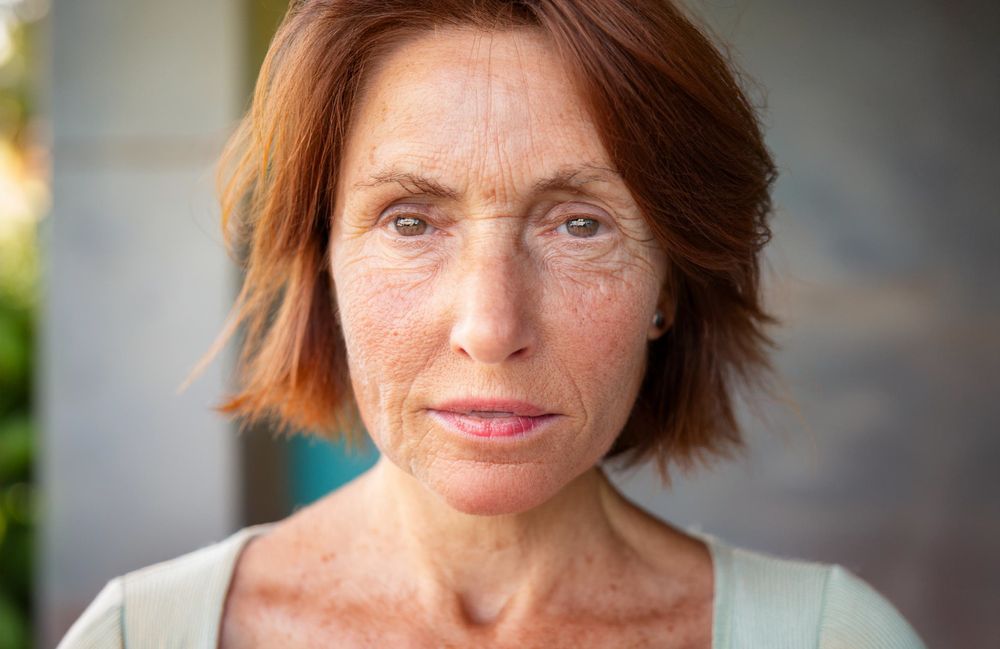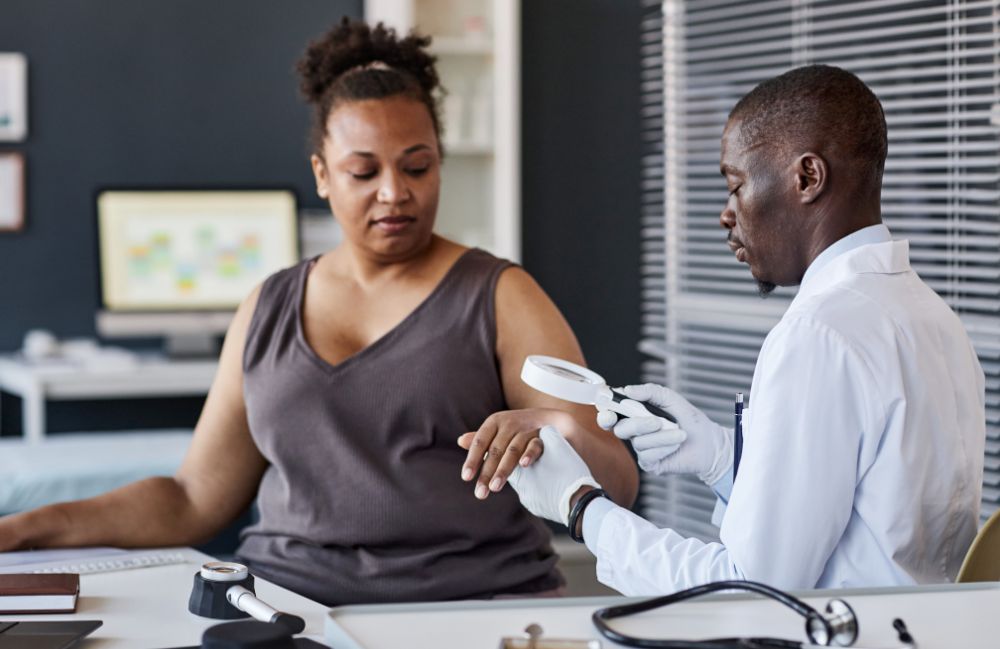
AKs commonly appear on sun-exposed areas such as the face, ears, scalp, hands, and neck. Individuals with fair skin, a history of extensive sun exposure, or frequent tanning bed use are at a higher risk. At Metropolis Dermatology in Costa Mesa, CA, we provide comprehensive treatment options to effectively remove actinic keratosis and lower the risk of skin cancer.
What is Actinic Keratosis?
Actinic keratosis is a precancerous skin condition caused by cumulative sun damage. Although AK lesions are not cancerous, they have the potential to develop into squamous cell carcinoma if left untreated. These patches often appear rough, dry, or flaky, with colors ranging from flesh-toned to pink, red, or tan.
Causes
- Long-term UV exposure: Chronic sun exposure weakens skin cells, leading to AK formation.
- Tanning bed use: Artificial UV radiation increases the risk of precancerous skin changes.
- Fair complexion: Individuals with lighter skin, blue or green eyes, and blonde or red hair are more prone to AKs.
- Weakened immune system: Certain medical conditions or medications can make the skin more susceptible to UV damage.
- Age factor: Actinic keratosis is most common in individuals over 40 due to accumulated sun exposure.
Symptoms
Actinic keratosis can present differently based on skin type and severity, but typical signs include:
- Rough, dry, or scaly patches on sun-exposed areas like the face, ears, scalp, and hands.
- Discolored lesions that appear red, pink, tan, or flesh-toned.
- Raised, crusty, or flaky areas that feel rough to the touch.
- Itching, tenderness, or a burning sensation in affected areas.
What Are the Possible Treatments?
Early detection and treatment help prevent AKs from developing into skin cancer. At Metropolis Dermatology in Costa Mesa, we offer advanced treatments tailored to your skin type and condition severity.
Treatments
- Topical Medications: Prescription creams such as 5-fluorouracil (5-FU) and imiquimod help eliminate abnormal skin cells.
- Laser Therapy: Targets damaged tissue to remove precancerous lesions and rejuvenate skin.
- Photodynamic Therapy (PDT): Uses a light-activated solution to destroy precancerous skin cells.
- Cryotherapy: Freezes lesions with liquid nitrogen, allowing them to slough off naturally.

FAQs
Is actinic keratosis dangerous?
While AKs are not immediately harmful, they have the potential to progress into squamous cell carcinoma, so treatment is recommended.
Can actinic keratosis disappear on its own?
Some lesions may temporarily fade, but AKs often return and worsen over time, requiring medical intervention.
How is actinic keratosis diagnosed?
A dermatologist will examine the skin and may perform a biopsy if needed to confirm the diagnosis.
How can I prevent actinic keratosis?
- Wear broad-spectrum sunscreen (SPF 30 or higher) daily.
- Avoid prolonged sun exposure, especially during peak hours.
- Use protective clothing, hats, and sunglasses outdoors.
- Refrain from using tanning beds or artificial UV sources.
How often should I have skin checks?
Individuals with a history of sun exposure or previous AKs should schedule annual skin exams to monitor for new or recurring lesions.
Hear from
Real Patients

Schedule Your Consultation Today!
If you have rough, scaly patches of skin or a history of frequent sun exposure, early treatment can prevent actinic keratosis from progressing into skin cancer. At Metropolis Dermatology in Costa Mesa, CA, we offer advanced treatment options to eliminate AKs and keep your skin healthy. Schedule a consultation today to discuss your treatment options!
